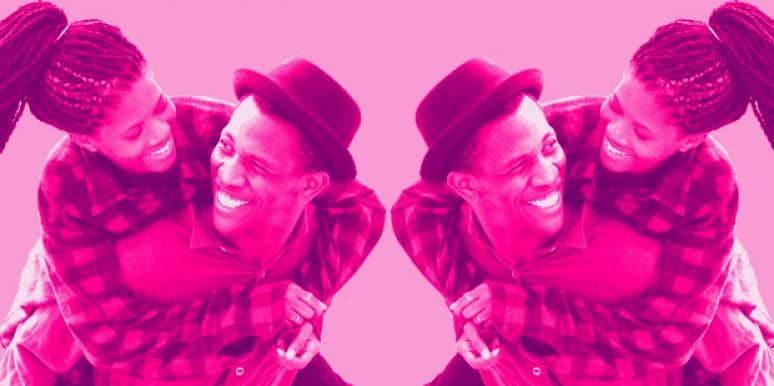
I’m hurtling through the backwoods of northwest Rhode Island in a late model Ford driven by a young associate of my friend, the notorious “mob lawyer” Jack Cicilline. We’re on our way to check on his even more notorious client, Raymond L. S. Patriarca, the longtime head of the New England Mafia. We race by crumbling dry-stone walls, stone-ender homes built in the style of the seventeenth century, and deer munching on frozen grass.
Raymond had been arrested at his home in Johnston, Rhode Island, while eating dinner that evening. A diabetic for many years, he was too distraught to finish the meal despite having already taken his insulin. His son, Raymond Patriarca Junior, and his wife, Rita O’Toole Patriarca, are afraid he’ll react badly to the excess insulin, or that he’ll have an angina attack (he’s also neglected to take his nitroglycerine with him). He’s being taken to the Rhode Island State Police Barracks in Scituate. Settled in 1710 by families from Massachusetts, the town’s name was derived from an Indian word meaning cold river.
I’m thirty-six years old but look younger. I have dark brown hair reaching my shoulders, dark brown eyes, and a sprinkling of freckles across my nose and cheeks. I am slim, five feet four inches tall, and I weigh in at a whopping 107 pounds. I’m the first female adult cardiologist to practice in Rhode Island, having arrived here in 1977, three years earlier. Prior to Raymond’s arrest, I had agreed to consult on the ailing crime boss’s health at the request of his son—but I had not yet met the man who was to be my patient in person. Now his need for medical attention has become urgent.
The charges he is facing, based on an informant’s testimony, include accessory and conspiracy to murder. These are just the latest in a string of legal entanglements Raymond has dealt with since he was a teenager. They will not be the last.

Raymond himself was nowhere to be seen, and there was no opportunity to talk to Jack privately. I said as little as possible, trying to pick up some cue from Jack as to how he wanted me to act and what he wanted me to do. After a few minutes, he told me to wait in the reception area while he went back to talk to Raymond, who, he told me, was being held in Major Lionel Benjamin’s office. Benjamin was second in command to Colonel Walter Stone, the superintendent of the Rhode Island State Police. (My son Archie would play on the same high school football team with Benjamin’s sons a few years later.)
When Jack returned, he motioned me to follow him into Benjamin’s office, then left and closed the door behind us, leaving me alone with Raymond and Colonel Benjamin.
My image of a Mafia don, like that of so many other Americans at that time, was Marlon Brando’s raspy-voiced Vito Corleone from "The Godfather," with his hooded gaze and menacing presence. What confronted me that night was something radically different. Raymond looked more like a wizened Italian cobbler than an all-powerful mafioso. My first thought on seeing him in the flesh was, “My God, he’s so tiny.” The second was, “Holy shit, he looks like he’s going to have a cardiac arrest any second, and I’ll never be able to resuscitate him here.”
The man I beheld was a short, shriveled seventy-two-year-old with a greasy sheen of perspiration coating his brow, an alarmingly cyanotic complexion, and the generalized muscle wasting of the chronically ill. I approached him, but he took no notice of me. I later learned he thought at first that I was a reporter.
“Mr. Patriarca,” I said, “I’m Doctor Roberts. Your son wanted me to check on you.” At this, he made eye contact with me but still didn’t speak. His breathing was labored, and I asked him if he was having any chest discomfort. “Yes,” he admitted, somewhat reluctantly. He added that he had left his nitroglycerine at home. Major Benjamin piped up, “Hey, Doc, do you want me to give him one of mine?” I declined, not knowing if they were the same dose as Raymond’s.
Raymond agreed to let me take his pulse and listen to his heart and lungs. Doing so only increased my alarm. His pulse was extremely erratic, which can be a warning sign of sudden cardiac arrest. His chest pain had lasted for over two hours. Quite aside from any legal considerations, I was now convinced that the only place he belonged was in the cardiac care unit of a hospital. His own nitroglycerine pills were brought from his home, and I gave him one. This eased his pain over the next fifteen minutes, but he continued to look ashen and to have an irregular pulse.
I told Major Benjamin that Mr. Patriarca needed to be admitted to the hospital immediately, arrest or no arrest. “No way,” he said. “You’re going to have to talk to Colonel Stone.”
Although I did not know it at the time, there was a long-standing public antipathy between Raymond and Colonel Stone, but Jack would later tell me that his own impression from private conversations with both men was that they had more respect for each other than might be expected, given their respective occupations. Whatever the truth of their relationship, that night, it seemed to me that Colonel Stone wanted Raymond’s arrest and subsequent conviction to cap his long and distinguished career in law enforcement.

Over the next several weeks, Raymond is treated for unstable angina and osteomyelitis. His arrest and subsequent hospitalization are front page news in the Providence Journal, with several law officers and prosecutors expressing skepticism about the true extent of his illness.
* * *
I was gradually coming to identify very strongly with Raymond as an “underdog.” This sounds bizarre, given his power, past, and reputation, but by the time I first laid eyes on him, he was very frail, very sick, and very frightened. He knew instinctively that a trial and jail term were tantamount to a sentence of death, even though he had kept secret the true extent of how disabled he really was. He was between a rock and a hard place. His pride and acculturation prodded him to deny the severity of his illness, but for me to succeed in keeping him from going to trial, he had to expose his fragility to public scrutiny. This he was deeply unwilling to do, at least initially. He also knew that I would pay a price for going to bat for him, and he made his gratitude clear, telling me more than once, “I know I owe you my life. I couldn’t love you more if you were my own daughter.”
How could I abandon him? I came to care passionately about his well-being. I would keep him from being put on trial; I would keep him out of jail. It had become a contest between me and the legal system, one I was determined to win.
Less than a year after becoming Raymond’s physician, I meet and become romantically involved with another alleged organized crime figure, Louis Manocchio.
* * *
On a Friday in mid-September, 1981, I performed a heart catheterization on an elderly patient who’d been referred by Bob Indeglia for consideration for aortic valve replacement. On the first injection of dye into the left coronary artery, we noted a very tight proximal blockage, one we called “the widowmaker,” — and immediately thereafter, the patient went into cardiac arrest. For close to an hour, we tried to resuscitate him, but to no avail.
I was devastated. To have a patient die from an intervention you are performing is harrowing. I left the catheterization laboratory to inform his family in a fog of misery. As is usually the case, they were kind and understanding, which paradoxically increased my distress. When I’d finished talking to them, it was lunchtime, and I called Jack Cicilline. I related what had just happened and he said, “I was about to go out for lunch. Come up the Hill and have lunch with me.”
We drove a short distance down Atwells Avenue, stopping at DePasquale Square. Decades before, it was lined with push-carts selling fruits, vegetables, and in winter, roasted chestnuts, but it was now host to small grocery stores, a poultry vendor, a pharmacy, and a restaurant called the Forum, which was one I hadn’t been to before. A large fountain topped with a sculpture of a pinecone graced the courtyard in front of the Forum, plumes of water performing a glissando into progressively larger pools. A few people sat relaxing on the marble rim of the lowest pool, soaking up the residue of warmth that lingered like a friendly ghost in the plaza. Inside, the hand of a talented interior designer was evident. Warm, exposed beams set off the original brick walls; the tables held Italian tile insets, and a shelf on the back wall displayed an assortment of colorful Italian ceramic vases and urns. Under this shelf was a long banquette, upholstered in a rich maroon paisley material. To the right of the dining room was a small bar with a mirrored backstop and rows of crystal wine goblets hanging overhead.
A succulent aroma, redolent of garlic and olive oil, tomatoes and spices, permeated the air. A man I took to be the manager came over to greet us as soon as we were inside the door. He was of medium height and carried himself with an effortless but steely dignity. He was bald on the top of his head, with short-cropped gray hair, a tanned face, and a very slight but unplaceable accent. I guessed his age as somewhere in his fifties. There was an indefinable aura about him that I found compelling. Somehow the air around him had a different density; it refracted light at a sharper angle. “Jack!” he said, shaking Jack’s hand and giving me a look of polite inquiry. “Welcome to the Forum.”

The name set off instant alarm bells in my mind. Was this, I wondered, THE Louis Manocchio, the one who had been “on the lam” for ten years and had only recently returned to Rhode Island? I wracked my brain for other details about him but could come up with nothing more. I had long since stopped buying the Providence Journal and read it only rarely.
“I’m very pleased to meet you,” Louis said, extending his hand to shake mine, then leading us to a table by a window that fronted the square. I can’t remember what we ate for lunch that day, and in truth, I had little appetite after the events of the morning. Louis was kept busy seeing to the normal bustle of a restaurant at lunchtime but visited our table frequently. I had the distinct impression that he knew who I was. He emanated a subtle authority that made his attentiveness seductive and flattering. When we had finished eating, he asked Jack if he could give me a tour of the restaurant, and Jack waved us off. He showed me the upstairs dining room and the kitchen. I had already visited the ladies’ room with its walls of rich, burnt umber tiles, every eighth tile containing the delicate tracery of a flower. He introduced me to the waitstaff and urged me to open an account there, saying that he hoped I would return often.
My impression was that Louis was in some subtle but definite way both courting me and paying me homage. I could feel the tachycardic thrumming of my heart as he took my hand and made a slight bow over it as we left. Out in the square, I turned to Jack: “Is he the one they call ‘Baby Shanks’?” I asked. “He’s the one,” Jack replied, “and I think you made a big impression.” I gave an uncertain laugh, not at all sure this was something I should be pleased about, but I was intrigued. I felt a sexual attraction to Louis, which surprised me no end because I’d never before been attracted to a man so much older than I. Since my breakup with George that summer, I’d been celibate — but with hormones coursing through my veins like a chemical Charge of the Light Brigade, I yearned for sex, for the oblivion and surcease of orgasm. I longed to be stoppered and shaken, to lie under a man, pelvis to pelvis in the slow, grinding dance of lust. My taste in men was clearly atrocious, but over the ensuing days, I could not expunge Louis from my thoughts. Like a ditty half heard on the radio that replays incessantly in the darkened theater of the mind, the opening lines of an Edna St. Vincent Millay sonnet repeated themselves endlessly in my head:
I too beneath your moon, almighty Sex,
Go forth at nightfall crying like a cat...
I knew it would be insanity to become involved with Louis, despite what I had to admit to myself was an intense and probably mutual attraction. The credibility of my testimony on Raymond’s health would be severely impaired, if not destroyed, if I became intimate with Louis and the relationship became known.
# # #
Adapted from "The Doctor Broad: A Mafia Love Story" by Barbara H. Roberts, M.D., publish date August 2019. (c) 2019, Heliotrope Books.


























